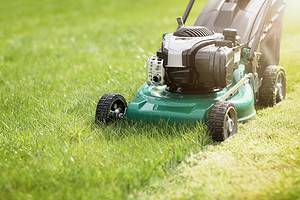Enter your email in the box below to get the most mind-blowing animal stories and videos delivered directly to your inbox every day.
They come from the sea, but they walk on land. Their legs span three feet; their claws can lift 44 pounds. They climb trees in search of food and have been known to grab live prey in the dark of night. They may even have eaten at least one celebrity. Meet the coconut crab, the largest terrestrial crab on earth. Stay away from its pincers, but don’t get the wrong idea: as fearsome as these crustaceans may seem, it’s humans who are a threat to them, not the other way around.
©KYTan/Shutterstock.com
Crabs are invertebrates belonging to the order Decapoda, which refers to their five pairs of legs. Other decapods include shrimp, lobsters, and crayfish. The crab body shape, with its flat rounded shell, and tail folded under the body, is probably familiar to you if you’ve ever visited the beach or the seafood department of your supermarket. And as body plans go, it’s a pretty successful one. About 10,000 crab species have been identified, and crab-shaped bodies have evolved separately at least five times among the decapods. Most crabs are sea-dwellers and can breathe water, but land-dwelling species develop the ability to breathe air.
The coconut crab (Birgus latro), which lives on islands of the southwest Pacific and Indian oceans, spends most of its life on land. Juveniles are hatched in the sea, and start their lives as water-dwelling larvae. But after 20-30 days, they transform into a land-dwelling stage. To survive out of the water, their gills essentially turn inside out, becoming lungs that will sustain them for as long as sixty years. During that time, the crabs can grow to have a leg span bigger than three feet and weigh as much as 9 pounds. This makes them not only the biggest land crabs, but the biggest land-dwelling arthropods. Which is kind of a relief; we certainly don’t need any spiders, bugs, or centipedes bigger than that. Among crabs, only the sea-dwelling Tasmanian giant crab and Japanese spider crab are bigger.
Coconut crabs begin to reproduce at age 5. After mating, females release fertilized eggs into the water, typically during high tide. Young crabs will protect themselves by hiding in a discarded seashell, which is a clue that these crabs are related to hermit crabs. When it’s time for them to live on land, the juveniles will burrow into the sand, where they metamorphose into a smaller version of their adult, air-breathing form.
©KYTan/Shutterstock.com
True to their name, coconut crabs will eat coconuts. And they’ve got the hardware to crack them open: two powerful claws, or pincers, that enable them to penetrate the coconut shell.
Coconut crabs can climb trees in search of their food, thanks to the curve and grip of their legs. Along with clawing them open, they’ve been observed dragging coconuts to the top of a tree, dropping them, then feasting on the broken pieces. Like many crabs, they’re scavengers who will eat fallen fruit and nuts, as well as carrion, including the flesh of dead crabs. But they’re also predators. A coconut crab will go after rats and other small mammals, sea birds, and even other coconut crabs, grabbing an animal that comes too close to the crab’s burrow. They’re even known to yoink food from campsites, which is one reason these crustaceans are also called “robber crabs.”
The coconut crab’s two large front claws have no trouble tearing through coconut shells to get at the flesh inside. Those pincers can exert more force than the human bite—over 1,765 newtons, compared to the human jaw’s 1,300-newton maximum. (The human hand is even weaker, only capable of generating about 300 newtons of force. So never try to shake hands with a coconut crab). That’s the strongest pinch of any crustacean. And relative to their body mass, coconut crabs exert more force than any animal bite except for an alligator bite. Researchers who’ve been pinched by the crabs describe it as “eternal hell.”
In some corners, coconut crabs are notorious for their connection to one of history’s mysteries: the disappearance of Amelia Earhart. According to the theory, the aviator crash-landed on a remote South Pacific island called Nikumaroro. In 1940, human remains were found on the island said to match Earhart’s measurements. Since only a few bones were found, it’s been postulated that the island’s coconut crabs fed on Earhart’s remains, dragging most of the bones to their burrows. However, we should probably show more restraint than the crabs and not swallow this theory. It’s questionable whether the bones didn’t belong to an island native; the recovered bones were lost after a 1941 examination. And it’s not known if Earhart’s plane was anywhere near the island in question.
©Kristina Vackova/Shutterstock.com
Coconut crabs have it pretty good, except for one thing: they’re delicious. Humans who live on their islands have a tendency to rely on the crabs as a food source, and also export them in support of the local economy. A 2022 report by the International Union for Conservation of Nature (IUCN) stated that coconut crab populations are disappearing, due to habitat destruction for development and agriculture, and harvesting by the seafood trade. The conservation group has listed the species as “vulnerable,” meaning it’s at risk for extinction. Regulation that limits harvest sizes and prohibits exportation may help coconut crabs survive.
Another problem that the crabs can’t pinch their way out of: climate change. Sea level rise is a threat to many of their island habitats, and some islands have already been lost to the ocean. The crabs, once they switch to living on land, can no longer breathe water. Meaning they’re vulnerable to drowning in the oceans that hatched them.
Thank you for reading! Have some feedback for us? Contact the AZ Animals editorial team.
A Dapple Dachshund’s dappling pattern may be just one spot, or it may be numerous spots and splashes on their coat.

As an Amazon Associate I earn from qualifying purchases.
Learn more about us & read our affiliate disclosure.
Copyright © 2008 – 2023 A-Z Animals
